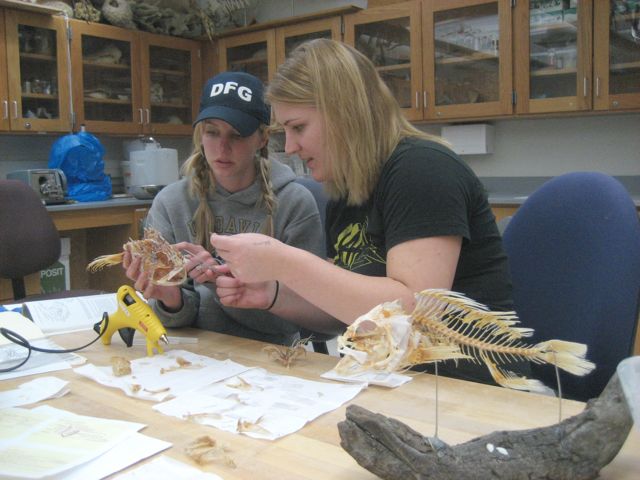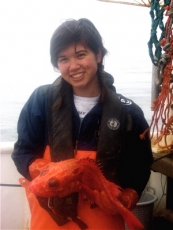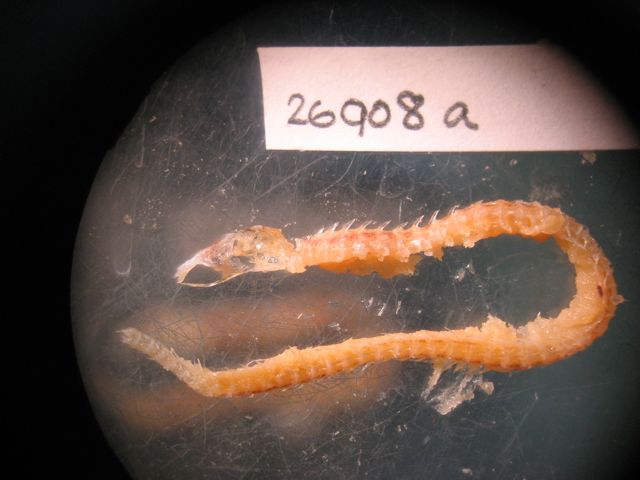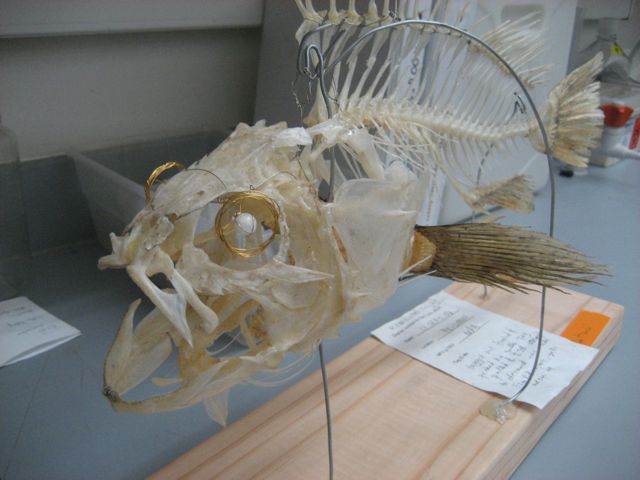

by Erin Loury, Ichthyology Lab
Skeletons are not just the stuff of Halloween at a marine lab – bones galore grace these halls of science year round. Although being surrounded by dead things can lead to some unfortunate stereotypes of mad scientists with macabre fetishes, getting up close and personal with bones is one of the best lessons in basic anatomy.
That’s why in Spring 2008, many of us set to the task of cleaning, taking apart and putting together fish skeletons for our Ichthyology class to better understand how the skeletal structures of these fish “work.” In honor of Halloween, check out some of our bone creations – I mean, preparations (affectionately known as “bone preps”):
Learning bones can have some practical bearing for research as well. While going through the stomach contents of my gopher rockfish, I have had to try to identify little fish prey items from their bones. As an example of cool cross-disciplinary collaborations, I and some other diet students have enlisted the help of Crisite Boone, an archaeologist from UC Santa Cruz who is an expert in fish bones from her study of California Indian middens. Who knew that identifying fish from bits of bone pieces could be a transferable skill?
Here’s a look at one of the more unique skeletons I found, that of a prickleback of some kind. Note the really robust spines on its back – looks almost…prickley, wouldn’t you say?

Happy Halloween!!!




